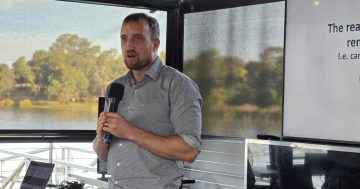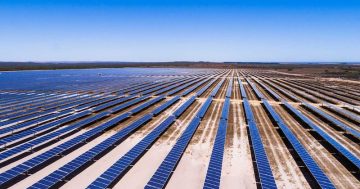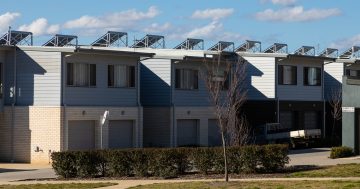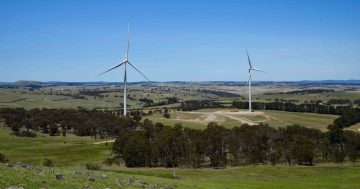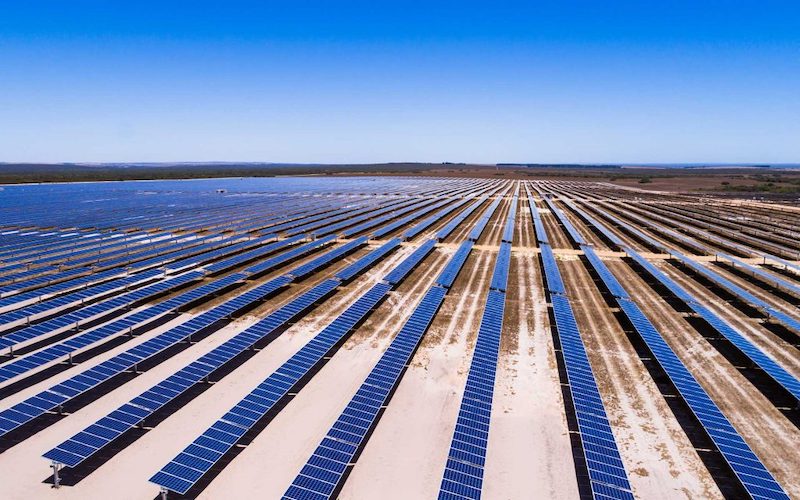
The sun continues to shine on solar but the latest policy shift from the Morrison Government is casting a shadow. Photo: Australian Renewable Energy Agency.
Two big announcements this week from the Federal Government show just how much the nation is paying for a toxic political system that seems incapable of making policy decisions in the national interest or governing in the public good.
After the Black Summer fires and with the west coast of the US ablaze, the government’s latest energy outing or ‘technology roadmap’ suggests that it believes we have all the time in the world to deal with the climate crisis, and while we can edge away from coal, gas will provide a bridge to that fabled zero-emissions future.
That’s locking in the nation to decades of dependence on a fossil fuel that still emits greenhouse gases, and which most of the smart money isn’t interested in investing in.
Prime Minister Scott Morrison had the best brains in the fossil fuel sector working on a post-COVID-19 recovery plan and – guess what? – they came up with a gas-fired solution, as well resurrecting the still unproven carbon capture technology to keep coal in the game.
The government’s green banks – Australian Renewable Energy Agency and the Clean Energy Finance Corporation – which have been making tidy profits backing solar and wind, can now invest in carbon capture and storage; ‘clean’ hydrogen, although that mainly will be from coal and gas; ‘low carbon’ steel and aluminium; soil carbon; and, thankfully, energy storage.
Solar and wind, which have shrunk power prices, are now proven and no longer deserve support.
One would have thought that their success should have been rewarded with settings to accelerate the transition to a clean energy future, including a carbon price, which did in fact reduce Australia’s emissions.
But no, with the Coalition still in the thrall of the climate change denialists, the government has come up with what it hopes is an acceptable compromise, swapping coal for gas, and leaving the detested renewables to fend for themselves.
Dressing it up as progress, the government is perverting the role of the ARENA and CEFC to focus on rubbing two sticks together instead of charting a path to exploit resources that are easily accessible and free.
Gas is neither, and extraction will be costly both financially and environmentally, relying on methods such as fracking and requiring a massive pipeline network that will eventually need to be decommissioned.
That’s if the assets don’t become stranded along the way.
Those cheap power bills will be as illusory as the hope of storing carbon underground.
What this road map does is retain a business-as-usual approach with a blatant disregard for public money and what the science and nature is screaming at us.
We are almost back to square one again, and looking at decades of wasted opportunities, if indeed the government’s plan comes to pass.
For some it makes no sense to walk away from the stability of coal or gas, and plumb for renewables that they say cannot provide uninterrupted power to homes and industry, even as battery storage is becoming more scalable and less expensive.
But that defeatist approach ignores the realities of global warming and the devastating costs it will impose, and that time is not on our side.
Even Federal Labor, scorched from its last election loss and fighting off its own fossil-fuelled insurgency, has supported a ‘sustainable gas’ industry.
The approach is in stark contrast to the leadership role taken by the ACT Government, which has secured renewable energy supplies, is now investing in battery storage and is committed to decarbonising transport.

Studying from home: COVID-19 has shown the value of fast, reliable broadband. Photo: File.
The other big decision from the Hill this week was to drop the ‘tin can’ approach to the NBN and spend billions on fibre optic to extend ultra-fast broadband to millions of households and businesses.
After years and years of denigrating Labor’s plan for universal broadband, adopting a multi-tech approach that retained copper wire to the premises and undermining the very motivation for implementing the network, the Morrison Government has come to its senses after COVID-19 restrictions exposed the NBN for the farce it had become.
With businesses surviving online, telehealth taking off and millions working from home, the value of fast, reliable broadband as something more than just a movie streaming vehicle became starkly apparent.
Still, it’s going to cost many more billions and a few more years to complete when we could have it already fired up.
And even then we will have to pay a premium to get the superfast version, instead of it being a universal service.
Again, years of wasted opportunity and public money.
The nation can’t afford much more of this.












